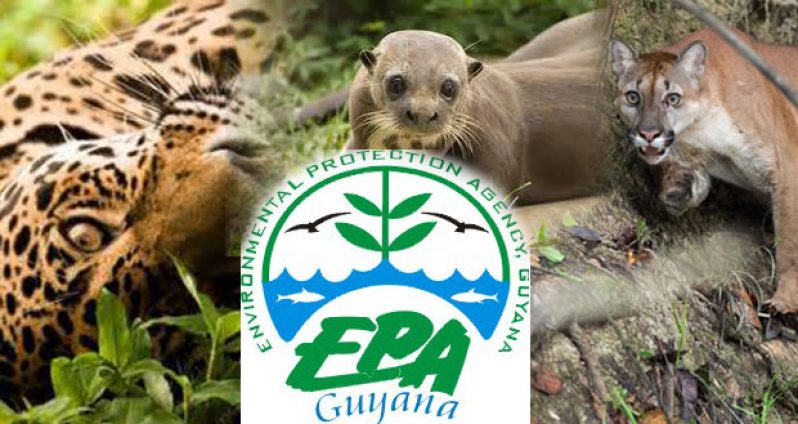This week as we continue looking at the Environmental Protection Regulations (2000) we turn our focus to the Environmental Protection (Water Quality) Regulations (2000), which were developed to address the problem of water pollution. Seventy (70) percent of Earth’s surface is covered by water but only three (3) percent is fresh water. What is sobering is that only one third of the existing fresh water is available to us humans to meet all our needs. Despite such a limited amount of water available, humans globally through their activities, abuse this resource thereby degrading its quality. Abuse causes contamination of water bodies such as lakes, ponds, oceans, and rivers or water pollution.
While Guyana is known as the land of many waters, many activities threaten the quality of water that is in our rivers, lakes and streams on which so many of us rely. Water pollution is indeed a growing problem in our country and as citizens we need to play our part to rectifying this problem.
Common causes of water pollution
The main contributors to water pollution in Guyana are domestic waste, agriculture and industries. Some examples are:
Industrial waste
Sewage
Mining activities
Marine dumping
Accidental oil leakage
Chemical fertilizers and pesticides
Leakage from sewer line
Urban development
Leakage from landfills
Animal waste
Environmental Authorisation
The EPA has a role in the regulation of discharges into our water bodies to protect them from pollution. This applies to both our coastal and inland waters and lands. Essentially, the EPA’s role is to ensure that pollutants released from human activities are within allowable levels will not adversely affect the health of humans, or other life forms. The EPA also encourages the use of methods for the final disposal of effluent to minimise the potential for contamination of water sources.
The Environmental Protection (Water Quality) Regulations (2000) requires that any person who discharges or permits the discharge of waste be registered with the EPA. As such, persons involved in construction, installation, operation, modification or extension of any facility which discharges waste MUST register with the EPA to discharge waste into waterways. No one is allowed to discharge any effluent without being the holder of an Environmental Authorisation. Failure to comply with this requirement will result in the penalty of a fine of up to five hundred thousand dollars ($500,000) and imprisonment for 6 months.
Waste Discharges that are prohibited
According to the Regulations, discharges of the following wastes are prohibited:
Any waste in toxic amounts
Radiological or chemical wastes
Any discharge that prevents navigation and anchoring
Sewage discharge from water vessels
Any other discharge that the EPA identifies as having a negative impact on human health and the environment
Limits
• The EPA sets parameter limits of waste which can be discharged into any coastal or inland waters. These are the limits the water body can maintain without reaching unacceptable pollution levels.
• No facility is allowed to discharge any substance in concentrations greater than those set by EPA.
• Penalty for non-compliance is a fine of up to$500,000 and 6 month imprisonment.
The EPA decides the point or source of discharge of effluent from any facility.
Variance of Authorisation
If changes are to be made to the normal operating conditions of an operation, the owner or operator must notify the EPA in writing about the particulars of such a change. It must be noted that after obtaining a variance to the Environmental Authorization, the operator is not allowed to carry out work that will result in a new source of effluent discharges. The penalty for such is up to $300,000 and 3 months imprisonment.
Remember, to make a complaint against any person or facility causing or contributing to water pollution; you can call 225-6044/225-5471/225-5467 or email to epa@epaguyana.org or eit.epaguyana@gmail.com.
Water is life, save it.
Source:
http://www.conserve-energy-future.com/sources-and-causes-of-water-pollution.php
EPA, Environmental Protection Regulation 2000
You can share your ideas and questions by sending letters to: ‘Our Earth, Our Environment’, C/O EIT Division, Environmental Protection Agency, Ganges Street, Sophia, GEORGETOWN, or email us at: eit.epaguyana@gmail.com




.png)









